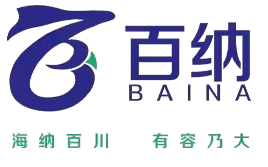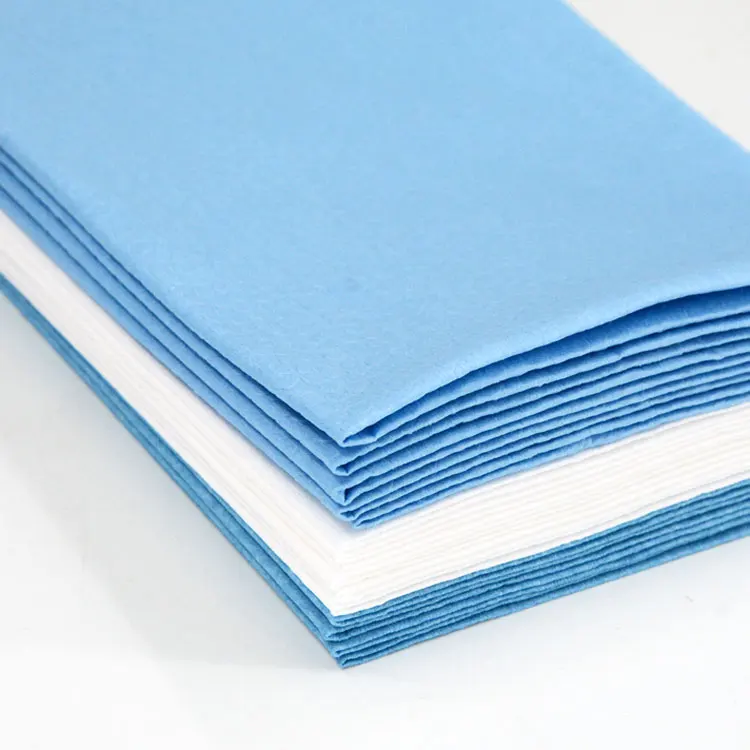Pölyttömän ja perinteisen paperituotannon määrittely
Kaksinkertainen kalendointiprosessi pölyttömässä valmistuksessa
Kaksinkertainen kalvontekniikka on keskeisessä roolissa pölyttömän paperin valmistuksessa, koska se toimii erittäin hyvin puhdasta pintaa luodessaan paremmalla kuitujen liitännällä. Periaatteessa tämä menetelmä puristaa paperikuituja kuumien rullien väliin, mikä tekee pinnasta huomattavasti sileämmän ja vähentää ärsyttävien löysien partikkelien määrää, joita kaikki inhoavat. Tuloksena on paperia, joka ei hylkää yhtä paljon pölyä, mikä on erityisen tärkeää paikoissa, kuten sairaaloissa tai puhdastiloissa, joissa kontaminaatio on hu concern. Vanhoihin tekniikoihin verrattuna kaksinkertainen kalvontekniikka tarjoaa selvästi parempia tuloksia siinä, kuinka tiukasti kuidut tarttuvat toisiinsa. Teollisuuden tutkimus osoittaa, että näillä pölyttömillä menetelmillä valmistettu paperi on myös vahvempaa, mikä tarkoittaa, että ne ovat yksinkertaisesti parempia kuin aikaisemmin käytetyt menetelmät. Viimeaikainen tutkimus Journal of Paper Science and Technology -julkaisussa tukee tätä, korostaen kuinka tärkeää kaksinkertainen kalvontekniikka on pölyttömän paperin puhdasti ja rakenteellisesti vahvana säilyttämiseksi eri sovelluksissa.
Perinteisen paperin mekaaniset vs kemialliset pulppausmenetelmät
Perinteinen paperin tuotanto käyttää yleensä mekaanisia ja kemiaalisia pulpausmenetelmiä.
Mekaaninen pulpaus sisältää fyysisesti murskattuja puutimisti, mikä on energiankulutusta vaativa prosessi, mutta säilyttää enemmän puun luonnonrakennetta, tuottamalla raskasta mutta vähemmän sileää paperia.
Kemiallinen massanvalmistus sisältää erilaisten kemikaalien käyttöä ligniinin hajottamiseen ja puun kuitujen vapauttamiseen, mikä tuottaa huomattavasti sileämpiä paperituotteita. Mutta myös tässä menetelmässä on haittapuolensa, sillä kaikki nämä kemikaalit aiheuttavat runsaasti jätettä ja saastuttavat paikallisia yhteisöjä. Näissä menetelmissä ero on selkeää myös siinä, miten ne kuluttavat resursseja ja vaikuttavat paikalliseen ympäristöön. Mekaaninen massanvalmistus taipuu tuottamaan enemmän käyttökelpoisia kuituja samasta puumäärästä, mutta lopputulos ei ole yhtä esteettinen kuin kemiallisesti valmistetut paperit. TAPPI-organisaatio tunnustaa, että kemiallinen massanvalmistus toimii yleisesti ottaen melko hyvin, vaikka sillä on ilmeisiä ympäristöongelmia. Kun yritykset päättävät, mitä menetelmää käyttää, ne punnitsevat käytännössä tekijöitä, kuten paperin laadun vaatimuksia ja vihreiden käytäntöjen sitoutumista. Jotkut yritykset saattavat priorisoida paremman laadun saamisen riippumatta ekologisista kustannuksista, kun taas toiset valitsevat mekaanisen menetelmän ainoastaan hiilijalanjäljen vähentämiseksi.
Harpakkeiden käyttö hiukkaspitoisuuden hallitsemiseksi
Harjattoman tilan säilyttäminen valmistusprosessien aikana on erittäin tärkeää, jolloin pölyä estetään vaikuttamasta herkkiin ympäristöihin. Kun hartseja käytetään oikein, ne toimivat kuin liima kuitujen välillä ja muodostavat esteitä, jotka estävät pölyn leviämisen ilmassa. Todellinen etu käy ilmi, kun tarkastellaan tiloja kuten sairaalat tai puolijohdetehtaat, joissa jopa mikroskooppiset saasteet ovat merkityksellisiä. Perinteiset menetelmät eivät kestä nykyaikaisia hartseja vastaan. Vanhat menetelmät päästävät usein pölyn pääsemään karkuun, koska ne eivät pysty muodostamaan yhtä tiukkoja sulkuja materiaalien ympärille. Tarkastellaan esimerkiksi TechPure Labs -laboratorion tapausta viime vuodelta hartseihin siirtymisen jälkeen saasteiden määrä laski yli 70 % sisäisten raporttien mukaan. Tämänlainen parannus ei ole yllättävä, kun otetaan huomioon sääntelykehyksen tiukkeneminen useilla eri aloilla. Valmistajien on nyt käytettävä luotettavia menetelmiä, joilla tilat pysyvät tarpeeksi puhtaina tarkastusten läpimenon varmistamiseksi samalla kun suojellaan sekä tuotteiden että henkilöstön terveyttä.

Kriittiset tekniset erot paperirakenteissa
ISO-hiukkaspäästöspesifikaatio: <10/cm² vs 200+ hiukkasta
ISO-standartit määrittävät ympäristövaatimukset paperinvalmistuksessa, erityisesti hiukkaspäästöjen hallinnassa valmistuksen aikana. Näiden päästöjen pitäminen noin 10 hiukkasta neliösenttimetrillä tarkoittaa parempilaatuisia lopputuotteita ja osoittaa edistystä puhtaan paperinvalmistustekniikoiden kehittämisessä. Perinteiset menetelmät tuottavat yleensä yli 200 hiukkasta neliösenttimetrillä, mikä johtaa karkeampiin pinnoitteisiin ja epäjohdonmukaisempiin tuloksiin. Näiden lukujen välinen ero on erityisen tärkeä laadunvalvonnalle koko teollisuudessa. Näihin matalampiin päästörajoihin perustuvia standardeja noudattavat paperitehtaat tuottavat yleensä johdonmukaisesti korkealaatuisempia tuotteita. Useiden teollisuuskertomusten tutkimukset osoittavat, että näiden ohjeiden noudattaminen vähentää haitallisia päästöjä ja parantaa samalla lopputuotteen lujuutta ja silkeyttä. Nykyaikainen pölytön teknologia ei ole hyvä vain ympäristön kannalta, vaan siitä on myös liiketoiminnallista hyötyä.
Jännityslahden vertailu resiinillä sidotuilla pinnalla
Harjattoman paperin valmistusprosessi, jossa käytetään hartseja, parantaa huomattavasti paperin lujuutta, kestävyyttä ja pitkäaikaisuutta verrattuna tavalliseen paperiin. Tässä prosessissa paperin rakenne voi kestää paljon enemmän rasitusta ennen kuin se pettää, mikä selittää sen tehokkuuden vaikeissa olosuhteissa, joissa normaali paperi epäonnistuu. Useiden laboratorioiden testitulokset ovat toistuvasti osoittaneet, että hartseilla valmistetulla paperilla on selvästi parempia vetolujuusarvoja. Tämä on erityisen tärkeää kirjankustantajille ja pakkausyrityksille, joilla on tarve käyttää materiaaleja, jotka eivät hajoa toistuvan käsittelyn jäljiltä. Kirjankustantualalla tällainen laatu on erityisen arvokas, sillä kukaan ei halua sivujen repeämään irti kuljetuksen tai säilytyksen aikana. Pakkausteollisuus hyötyy myös suuresti, sillä tuotteiden on pysyttävä ehjinä jakeluketjun eri vaiheissa.
Pinnan topografia-analyysi teollisissa mikroskooppeissa
Teollisuusmikroskoopin alla tarkasteltuna paperin pinnat osoittavat melkoisia eroja pölyttömien vaihtoehtojen ja tavallisen paperilaadun välillä. Näillä testeillä nähdään, että pölyttömät paperit ovat yleensä huomattavasti sileämpiä, mikä tekee niistä parempia terävien kuvien ja tekstin painamiseen. Painotalot huomaavat tämän välittömästi, sillä sileämpi pinta tarkoittaa tasaisempaa musteen jakautumista sivulle. Pinnan laadulla on suuri merkitys tulostuksen lopputulokseen, erityisesti yksityiskohtaisessa työskentelyssä, jossa jokainen viiva täytyy olla selkeä. Tämän asian vahvistaa myös teollisuuden data: monet valmistajat raportoivat, että pölyttömät tuotteet toimivat paremmin eri sovelluksissa, jotka vaihtelevat mainosmateriaaleista premium-lehtiin, joissa kuvanlaatu on tärkeää.
Ympäristö- ja terveysvaikutusten vertailu
Kierrätysasteet ja suljetun kiertoon perustuvat prosessointikyvyt
Pölyttömät paperit pyrkivät kierrättämään paremmin kuin tavallinen paperi, koska niitä valmistetaan eri tavalla alun alkaen. Itse valmistusprosessi on myös puhtaampi ja tehokkaampi. Todellinen ero johtuu kuitenkin nykyään monissa paperitehtaissa käytettävistä edistetyistä suljetuista kierrätysjärjestelmistä. Nämä järjestelmät käytännössä uudelleenkäyttävät suurimman osan siitä, mikä normaalisti menisi kierrätyksessä hukkaan. Jonkin verran tutkimuksia osoittaa, että yritykset, jotka käyttävät näitä järjestelmiä, säästävät noin 75–80 prosenttia vedestä, joka yleensä kuluu tavalliseen kierrätysmenetelmään. Yrityksille, jotka tarkastelevat ympäristövaikutuksiaan, tämänlainen teknologia auttaa vähentämään resurssien kulutusta ja samalla säilyttämään ne vihreät standardit, joita nykyään kuluttajat arvostavat. Kun yritykset siirtyvät pölyttömiin vaihtoehtoihin arjen toimissaan, heidän brandidensä kuvan koetaan yleensä paranevan, erityisesti kun yhä useammat kuluttajat etsivät aktiivisesti ympäristöystävällisiksi merkittyjä tuotteita.
Kemiallisten aineiden kuormitusvertailu sidontavedeissä
Pölyttömässä paperinvalmistuksessa käytetään sideaineita, jotka sisältävät huomattavasti vähemmän kemikaaleja kuin mitä nähdään perinteisissä valmistusmenetelmissä. Kun prosessiin menee vähemmän myrkyllisiä aineita, siitä seuraa puhdempaa ilmaa tehtaan ympärillä ja paremmat olosuhteet lähialueiden villieläinten elintiloihin. Ympäristönsuojelujärjestöt ovat itse asiassa mittaamassa päästöjen vähenemistä haitallisia saasteita tehtävissä, jotka ovat siirtyneet käyttämään näitä uusia tekniikoita. Paperiteollisuus on vähitellen siirtymässä vanhojen liimapohjien käytöstä turvallisempiin vaihtoehtoihin, jotka ovat hyödyksi sekä työntekijöille että yhteisöille. Valmistajille, jotka seuraavat sekä liiketulosta että luontoystävällisyydestä, nykyaikaisten sideaineiden käyttöönotto vähentää jätteen hävittämiskuluja ja täyttää silti kaikki hallituksen säätämät työturvallisuus- ja vesilaatustandardit.
Allergenienvähennyksessä hienopölyttömissä työympäristöissä
Paperin valmistus ilman pölyä vähentää allergeeneja työpaikoilla, mikä tekee työntekijöiden oloista terveellisempiä. Pölyn vähentyminen ilmassa tarkoittaa myös, että työntekijät voivat hengittää helpommin. Terveydenhuoltojärjestöt ovat todellakin havainneet melko merkittävän laskun astma- ja allergiatapausten määrässä yrityksissä, jotka ovat siirtyneet pölyttömien vaihtoehtojen käyttöön. Tämä siirtymä osoittaa, kuinka tärkeää on hyvänlaatuinen paperi, kun halutaan pitää tiimi terveenä. Yritysten kannattaa harkita myös ilmanvaihtojärjestelmien kunnossapitoa yhdessä pölyttömien tuotteiden käytön kanssa, jos halutaan saavuttaa kaikki siistien työpaikkojen hyödyt. Puhtaampi ilma on hyväksi ei ainoastaan ihmisten keuhkoille, vaan se auttaa myös yrityksiä noudattamaan turvallisuussäädöksiä tehokkaasti joka päivä.
Suorituskyky ammattimaisissa tulostussovelluksissa
CMYK-liitosasteet suljettuina ja poroisten pintojen välillä
Kun tarkastellaan, miten paperit kestävät ammattipainatuksissa, yksi tärkeä tekijä nousee esiin: kuinka hyvin CMYK-väriaineet tarttuvat erilaisiin paperin pintoihin. Pölyttömät ja tiiviisti pinnoitetut paperit pitävät väriä paremmin kuin tavalliset huokoiset paperit, joita on yleisesti saatavilla. Erot ovat tärkeitä, koska ne vaikuttavat sekä painotuotteiden ulkonäköön että siihen, kuinka kauan ne säilyvät vaalehtumatta tai smudjumatta. Tutkimukset osoittavat, että tiiviit pinnat itse asiassa imevät väriä eri tavalla, mikä tarkoittaa, että värit pysyvät kirkkaina ja tekstit selkeinä myös käsitelyn jälkeen. Useimmat painotalot tuntevat tämän johtuen siitä, että niiden testiprotokollat tarkistavat aina ensin pinnan käsittelyn arvioidessaan paperin laatua. Siksi monet kaupalliset painotalot varastuttavat pölyttömät vaihtoehdot aina mahdollisuuksien mukaan niissä premium-asiakasprojekteissa, joissa kuvan selkeys on erityisen tärkeää.
Laserkilpelien yhteensopivuus ja kiintyjän saastumisen riskejä
On järkevää ymmärtää, miten pölyttömät paperit toimivat laserkirjoittimien kanssa, jos haluamme vähentää tulostusongelmia tulevaisuudessa. Näillä erityisillä papereilla on pinnoitteita, jotka auttavat niitä liukumaan paremmin laserkirjoittimen sisällä olevien liikkuvien osien yli, jolloin fuserointialueelle jää vähemmän roskaa. Tavalliset huokoiset paperit eivät kestä yhtä hyvin tätä kulumista. Ne jättävät takaisin jäännöksiä, jotka kasautuvat ajan mittaan ja johtavat kalliisiin korjauksiin ja moniin päänsärkyihin, kun kirjoittimet alkavat toimia epävakaasti. Suurimmat kirjoitinvalmistajat suosittelevat itse asiassa pölyttömän paperin käyttöä, koska he tietävät sen vähentävän tällaisia ongelmia. Käyttöohjeissaan nämä valmistajat mainitsevat käytännössä kaikki saman asian, eli että laitteisto toimii tyylikkäästi toimistojen ja muidenkin paikkojen, joissa tulostuslaatu on tärkeää, olosuhteissa. Myös painotalojen käyttäjät kertovat samanlaisia tarinoita lukuisia kertoja, sillä tulokset ovat selvästi parempia ja kirjoittimien korjauksiin käytettävää aikaa kuluu huomattavasti vähemmän siirryttyä pölyttömiin vaihtoehtoihin.
Arkistointivakauden kosteushaluttelu
Kun on kyse ammattimaisista painotarpeista, materiaalien kestävyydellä ajan kuluessa on suuri merkitys. Pölyttömät paperit kestävät oikeasti hyvin kosteuskestoja verrattuna tavalliseen paperiin, joka on taipuvainen hajoamaan, kun se on ollut kauan kosteassa ympäristössä. Hajoavan paperin ongelma ei koske pelkästään ulkonäköä, vaan se vaikuttaa vakavasti dokumenttien säilyttämiseen, erityisesti silloin kun asiakirjojen tarkoitus on säilyä vuosikymmeniä tai pidempään arkistoissa. Tämä ilmiö on huomattu myös arkistotyössä, jossa kerrotaan näiden erityspaperien säilyttävän kokoelmia huomattavasti pidempään, vaikka ne olisivat säilytettävänä vähemmän kuin ihanteellisissa olosuhteissa. Teollisuuden tutkimus tukee tätä havaintoa myös osoittamalla, että pölyttömät vaihtoehdot säilyttävät laadun huomattavasti paremmin kuin perinteiset vaihtoehdot riippumatta ympäristön aiheuttamista haasteista.
Kustannus-hyötyanalyysi liiketoiminnan toteutuksille
Hinta ream-kohden verrattuna koneen ylläpitökustannusten säästöihin
Kun tarkastellaan, onko pölytön paperi vaihtoehdon arvoinen tavalliseen paperiin nähden, yritykset säästävät todellisuudessa rahaa kahteen pääkohtaan: materiaalikustannuksiin itse asiassa ja siihen, mitä he käyttävät tulostinten korjaamiseen. Totta kai pölytön paperi maksaa enemmän per ream alun perin, mutta tulostimet eivät hajoa yhtä usein, kun niissä käytetään näitä arkeja. Tämä tarkoittaa vähemmän korjaustöitä ja varaosien vaihtamista, jotka kuluu nopeammin pölyisen paperin vaikutuksesta. Teollisuusraporteissa on osoitettu, että painotalot, jotka siirtyvät käyttämään puhdempaa paperilaatua, huomaavat huoltokustannusten laskevan merkittävästi, koska laitteet kestävät pidempään ennen kuin huolto on tarpeen. Myös käytännön esimerkit tukevat tätä: monet kaupalliset painotalot mainitsevat laitteiden pidentynyttä käyttöikää sekä parantunutta päivittäistä suorituskykyä toiminnassaan. Vaikka alkuperäinen hinta saattaa vaikuttaa korkealta, useimmat huomaavat, että ajan mittaan vähentyneenä seisokkinanä ja sulavampana työnkulku erottaa kaiken erot tuloksessa.
ISO-varmenteiden vaatimukset puhtausHuone-komitean noudattamisesta
Puhtaiden tilojen ympäristöissä toimiville yrityksille ISO-sertifiointi ei ole vain lisäetu vaan käytännössä välttämätöntä, kun paperituotteita valmistetaan tiukkojen määräysten alaisuudessa. Tarve pölynvapaille materiaaleille korostuu erityisesti tässä yhteydessä, sillä jopa pienimmätkin hiukkaset voivat tuhota koko tuotantoserioita. Olemme viime aikoina havainneet yhä enemmän tietoa, joka viittaa teollisuuden siirtyvän sertifiointiin. Monet valmistajat suosivat nyt toimittajia, joilla on valmiina ISO-sertifiointeja, koska he tietävät hyvin, mitä seurauksia on, jos standardeja ei noudata. Kun yritykset noudattavat ISO-ohjeita puhtaiden tilojen toiminnassa, ne saavat todellisen kilpailuedun niiden kilpailijoiden kustannuksella, jotka leikkaavat kulmat. Laadunhallinnan ulkopuolella näiden sertifiointiprotokollien noudattaminen pitää ne edellä teollisuuden odotusten muutoksia vuosien mittaan.
Elinkaaren kustannusennusteet korkean tilavuuden toiminnassa
Suurten toimintojen ylläpitävät yritykset hyötyvät erityisesti elinkaarikustannusten tarkastelusta tehdessään merkittäviä päätöksiä. Pölytön paperi toimii itse asiassa paremmin kuin tavallinen paperi useista syistä johtuen. Sitä ei tarvitse vaihtaa yhtä usein, se tuottaa vähemmän jätettä ja säästää materiaalikustannuksia pitkäaikaisesti ajatellen. Paperiteollisuudessa on myös huomattu tämä trendi, ja yritykset, jotka siirtyvät käyttämään pölytöntä paperia, erityisesti ne, jotka tulostavat tuhansia sivuja päivittäin, saavat selvästi alhaisemmat kokonaiskustannukset. Kun yritykset alkavat seurata näitä lukuja, heillä on selkeämpi kuva tulevista kustannuksista jo kuukausia etukäteen, mikä auttaa heitä suunnitella viisaammin ja samalla myös huolehtia ympäristöystävällisyydestä. Pölyttömän paperin käyttöönotolla vähennetään myös jätteiden määrää kaatopaikoilla ja tarvetta tehdä useita ostosmatkoja, joten säästöt kasvavat nopeasti ajan myötä.
Usein kysytyt kysymykset
Mitä tarkoittaa kynnyksettoma paperi?
Typpivapaa paperi valmistetaan käyttämällä kaksinkertaista kalenderointiprosessia ja resiinilla suljettuja kiinteysmenetelmiä vähentääkseen typpipäästöjä. Se on ideaalinen ympäristöille, joissa vaaditaan korkeat puhtauden standardit.
Miten typpivapaa paperi eroaa perinteisestä paperista?
Typpivapaalla paperilla on alhaisemmat hiukkaspäästöt, parempi kierrätettävyys, vähemmän allergenoja ja parantunut arkistointivakausuus verrattuna perinteiseen paperiin.
Mitkä ovat typpivapaan paperin etujen käytössä ammattitulostuksessa?
Typpivapaa paperi tarjoaa paremman CMYK-kiinnityksen, vähentää riskejä laseritulostimen liimauksen saastumisesta ja parantaa arkistointivakaustaa kosteissa olosuhteissa.
Miksi yritykset tulisi valita typpivapaa paperi?
Liiketoiminnalliset edut sisältävät säästöjä koneiden huoltokustannuksissa, noudattavat ISO-sertifikaattivaatimuksia ja vähentävät elinkaupankustannuksia suurten tilausten operaatiossa.




